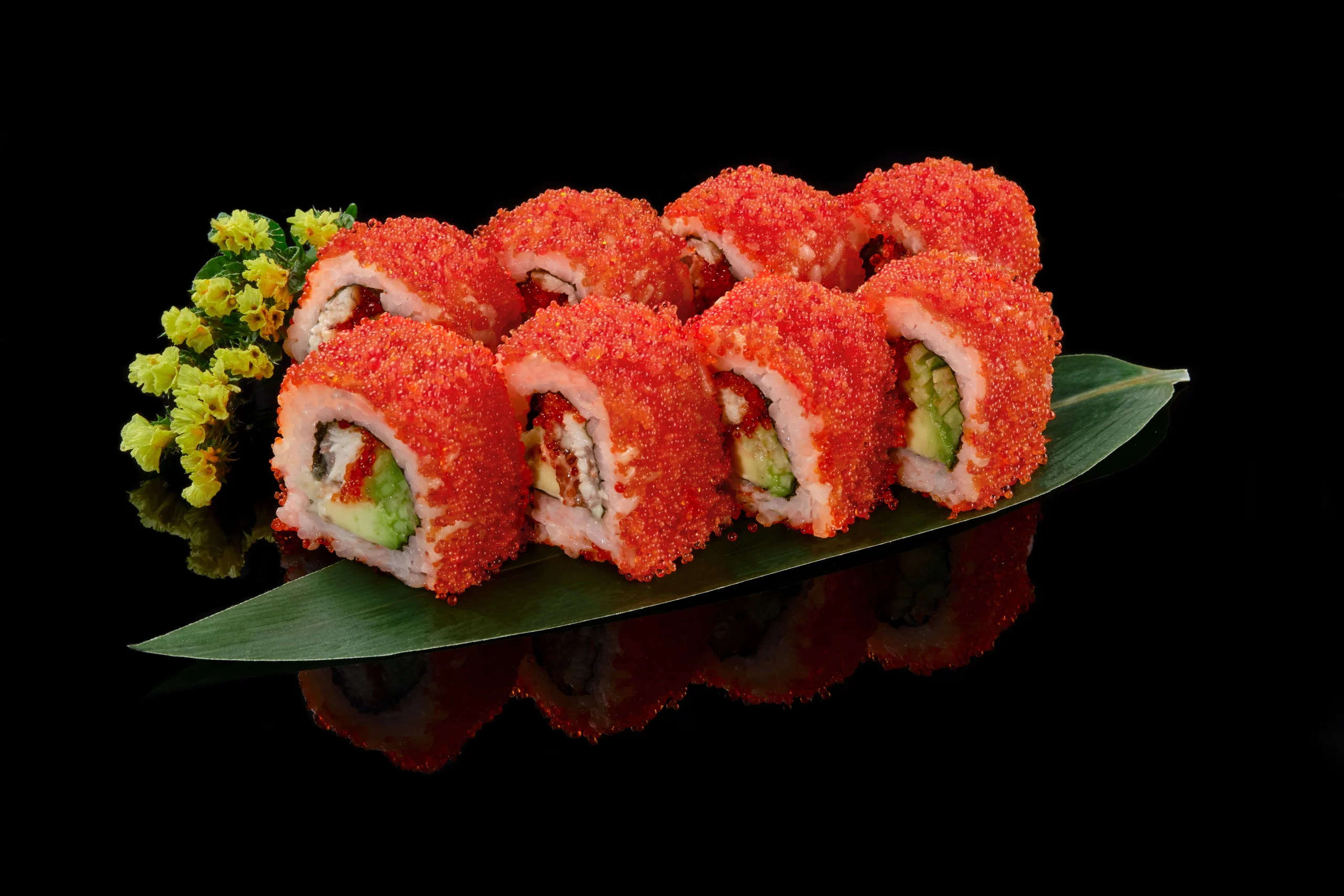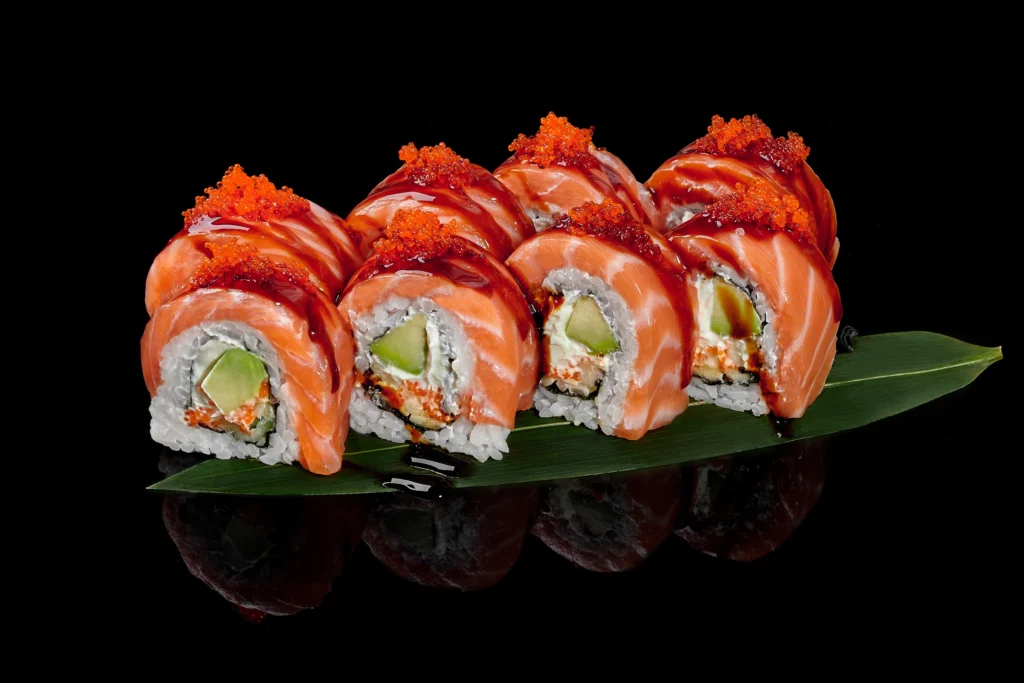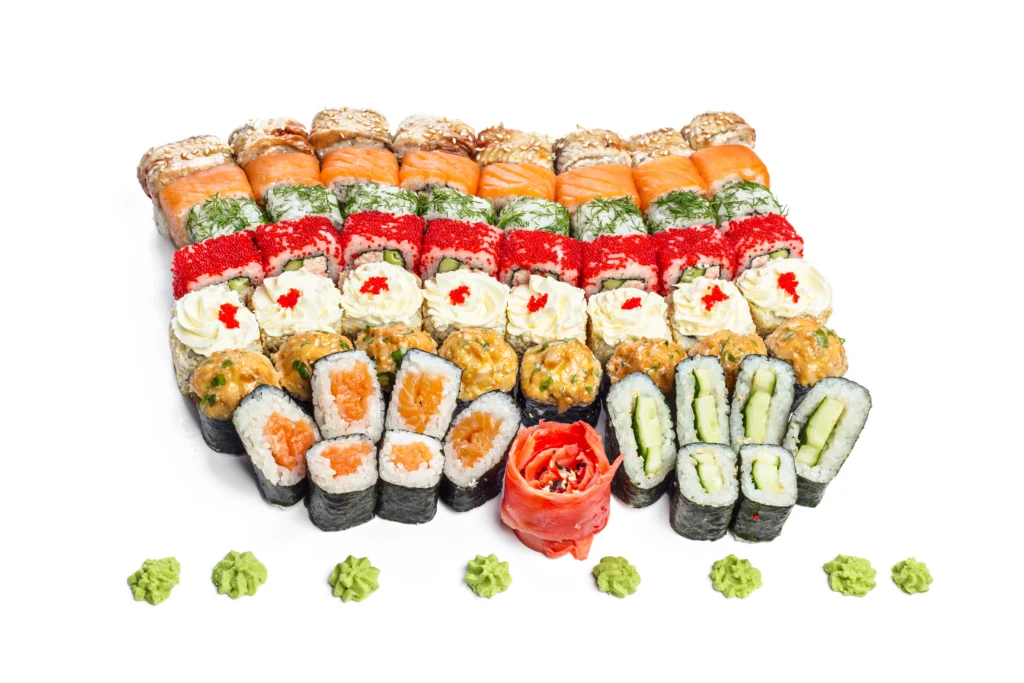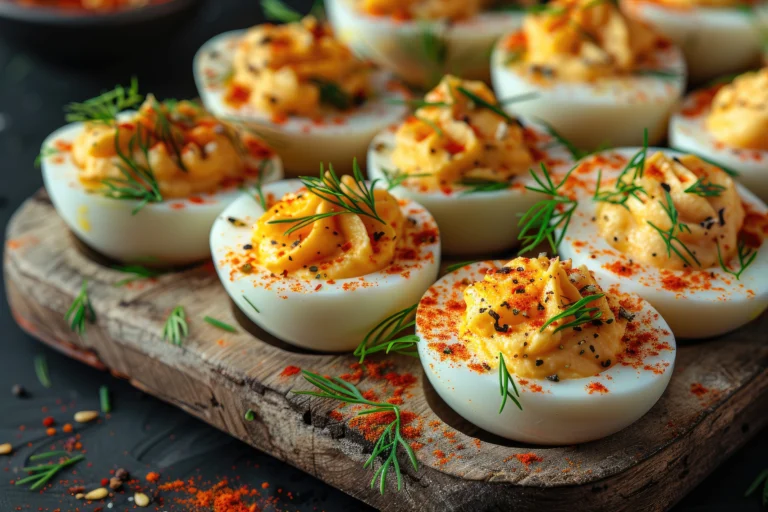Tobiko: The Delightful Fish Roe in Sushi

Ever wondered about those tiny, colorful balls on your sushi? They’re tobiko, a type of fish roe! These little gems are flying fish roe and are often used in sushi. Tobiko adds a crunchy texture and a salty, smoky taste. It’s like a burst of ocean goodness in every bite.
But wait, there’s more! Tobiko comes in different colors too. You might see orange, green, or even black tobiko. These colors aren’t just for show. They can change the flavor a bit too.
Want to try using tobiko at home? It’s easy! You can sprinkle it on pre-made sushi or use it in your own creations. Just make sure to store it properly and enjoy the tasty adventure!
Table of Contents
Key Takeaways
- Tobiko, a type of fish roe, is often used in sushi for its crunchy texture.
- Different colors of tobiko, like orange and black, can change the taste.
- You can use tobiko at home to make sushi and add unique flavors.
- Tobiko comes from flying fish and adds a smoky taste to your dishes.
- Store tobiko properly to keep it fresh and safe for use.

Types of Fish Roe in Sushi
Talking about the colorful variety of fish eggs in sushi, tobiko is a standout. You might have noticed tobiko’s vibrant hues atop your sushi, adding more than just color. Known as flying fish roe, these tiny, crunchy orbs bring a unique touch to each bite. While tobiko leads the pack with its smoky and salty flavor, it often gets confused with masago due to their similar looks. But don’t let that fool you; tobiko’s texture sets it apart.
Now, let’s address the confusion with salmon roe, or ikura. These are much larger and burst with brininess, unlike the delicate crunch of tobiko. On the other hand, uni, the creamy sea urchin roe, offers a sweet, buttery bite. It’s a different experience from the pop of tobiko. And let’s not forget the Japanese fish eggs called kazunoko, hailing from herring, bringing a firmer texture to sushi creations.
You may wonder, are pre-made sushi dishes safe with these fish eggs? Absolutely, when sourced and stored correctly. Just like you ensure your savings are protected through reliable insurance, keeping your tobiko fresh involves proper handling. Over on Secrets of Sushi’s Facebook page, they share tips on safe sushi practices.
Now, if you’re feeling adventurous, try tobiko at home. It’s an easy way to make sushi look fancy and taste fabulous. Sprinkle it over your rolls for that extra zing. Its colorful variations, like wasabi-infused green or squid ink black, can make your homemade sushi a real show-stopper. And hey, don’t forget to leave your comments on how you use tobiko to elevate your sushi game!
How Tobiko Enhances Sushi Flavor
How does the addition of tobiko create a sushi experience like no other? Well, imagine a tiny explosion of flavors happening right in your mouth. These little fish eggs, or flying fish roe, add a delightful crunch and a hint of smokiness. They make your taste buds do a happy dance!
Place them on your sushi rolls, and watch them transform into a visual feast. These eggs on sushi are like colorful confetti, making each bite a celebration. You might say they bring a party to your plate. And, they balance out other flavors, like a skilled conductor leading a symphony.
Now, these aren’t just pretty decorations. They create a harmony of flavors, turning each bite into a symphony. Picture this: your sushi roll is like a stage, and tobiko adds that extra sparkle, making the show unforgettable. The sushi fish eggs, with their natural colors, can be jazzed up with unique hues. Squid ink turns them black, while wasabi gives a green twist.
If you’re a user who loves experimenting, try incorporating them into home-cooked sushi. They’re easy to use and add a gourmet touch. And if you’re wondering about pre-made sushi safety, rest assured, they’re as reliable as a trusty umbrella in a rainstorm.
So, get creative, sprinkle these gems over your rolls, and maybe even share your thoughts in the comments section. Your sushi adventure awaits, and with tobiko, it’s bound to be a tasty ride. But remember, don’t confuse these with salmon roe; each has its own magic. Enjoy the crunch, savor the flavor, and let your sushi speak volumes!
Color Variations and Their Meanings
Exploring the hues of fish eggs unlocks a palette of flavors and meanings. The natural tint of these tiny morsels is an orange-red, inviting and rich. But you can find them in a rainbow of colors. Ever seen black eggs on sushi? That’s thanks to squid ink. It adds a mysterious touch, much like a secret ingredient in your grandma’s pie. Ever thought about green ones? That’s the magic of wasabi, giving a spicy kick to your bite.
This color play isn’t just for show; each hue adds a unique flavor twist. Black eggs might remind you of the sea, while green ones bring a wasabi punch. Some colorings even have cultural vibes. Red might symbolize celebration, much like our love for fireworks on New Year’s Eve. Each color tells a part of the sushi tale.
Have you noticed comments on social media? People love snapping these colorful delights. Speaking of social, did you know that a popular Instagram account, Secrets of Sushi, often features these vibrant fish eggs? It’s a feast for the eyes and a testament to their popularity.
If you’re a sushi called enthusiast, you might enjoy a debate on whether these fish eggs are better than salmon roe. Some say these eggs are like a melody, while salmon roe is the bass line. Preferring one over the other could be like choosing between chocolate and vanilla.
In the end, whether you’re eating them or just admiring their beauty, these colorful delights are more than just an ingredient. They are a flavorful adventure waiting to be explored.

Tips for Using Tobiko at Home
When using tobiko in your home-cooked meals, begin by sourcing it from trusted suppliers. Freshness is key to enjoying its popping texture and smoky essence. Once you have it, store it in the fridge, ensuring it stays in its original packaging to keep it fresh.
For sushi dishes, tobiko can be a game-changer. Sprinkle it on top of sushi rolls or sashimi for a burst of flavor and color. It’s like adding a sprinkle of magic to your creations. If you’re feeling adventurous, mix it with other seafood like shrimp or salmon roe for a delightful twist.
Incorporating tobiko into dishes beyond sushi is also a fun adventure. Imagine adding it to scrambled eggs or atop a salad for unexpected crunch and flavor. This can make breakfast or brunch an affair to remember. It’s these little surprises that elevate everyday meals to something special.
Consider experimenting with different color variations of tobiko. Different colors can add visual excitement to your dishes and might even bring subtle flavor changes. Green tobiko, for example, with its wasabi flavor, can add a spicy kick. Trying different combinations can be like a culinary treasure hunt.
When serving, a little goes a long way. Just a small scoop can transform your dish. It adds that unique pop that makes guests ask, “What’s your secret?” You’re the master chef in your kitchen, and these tiny fish eggs are your secret weapon.
Finally, remember that safety is important when serving pre-made sushi. While tobiko is safe to eat, always check if the sushi has been stored properly. Enjoy your culinary creations, and let your inner chef shine!






